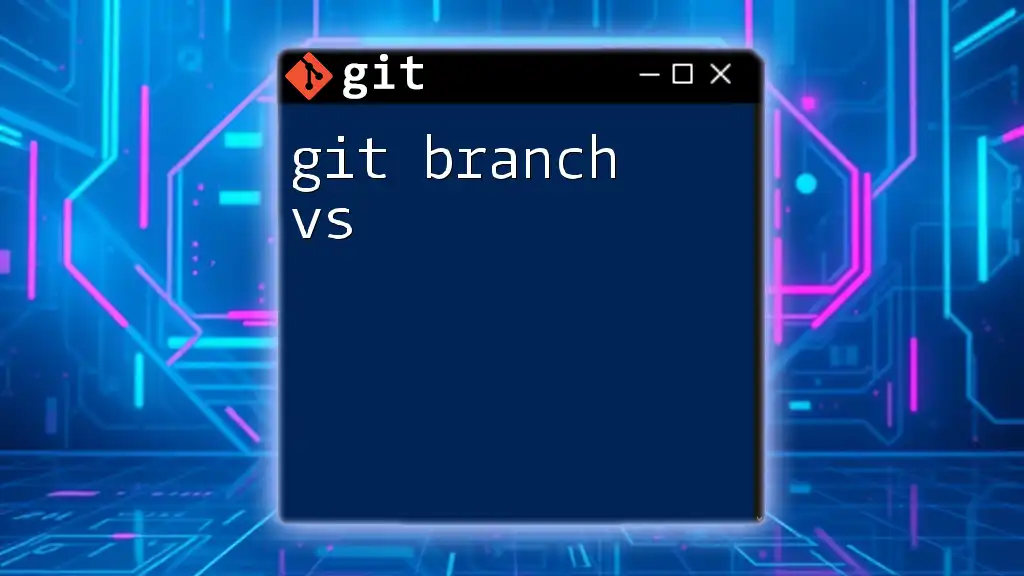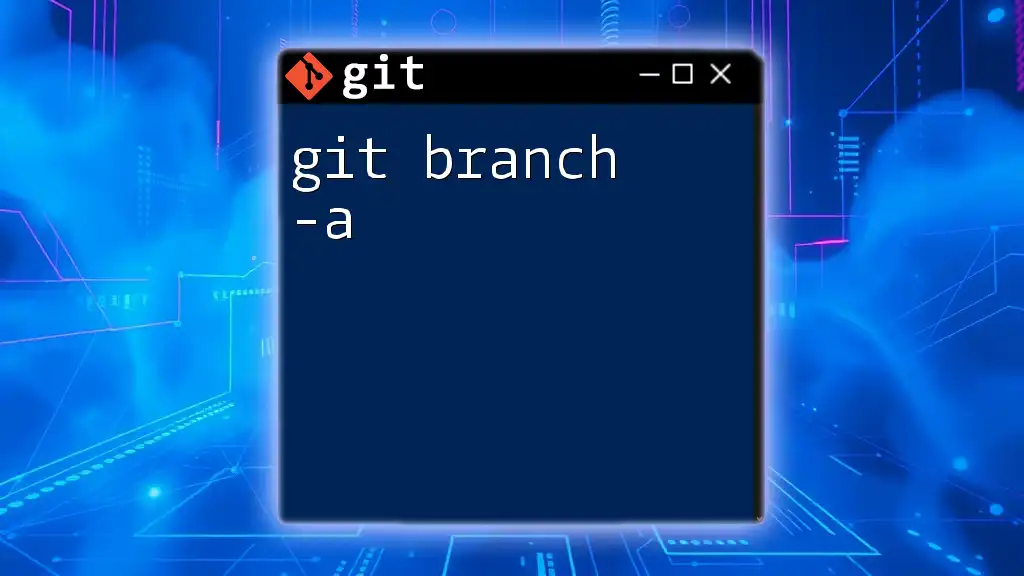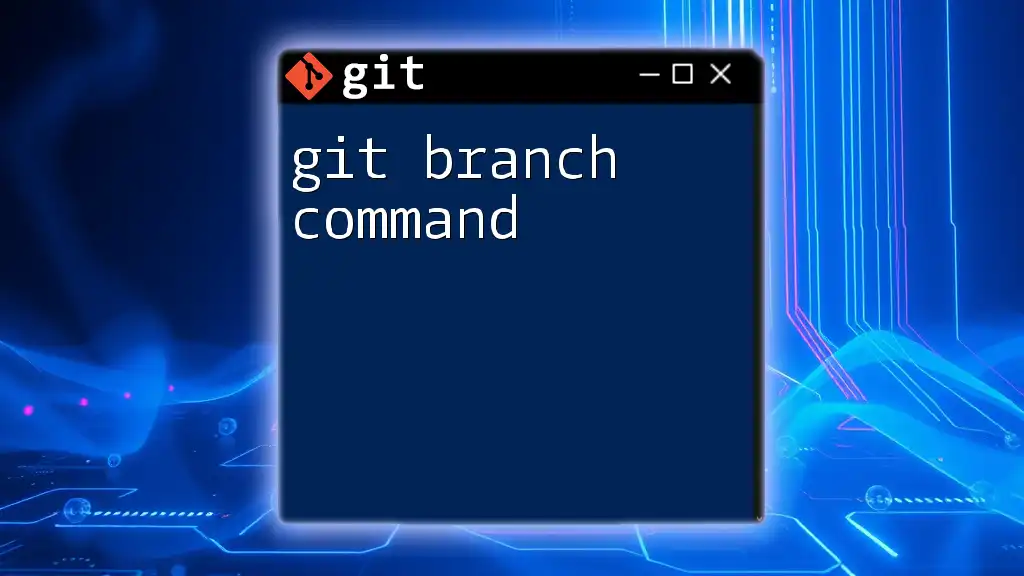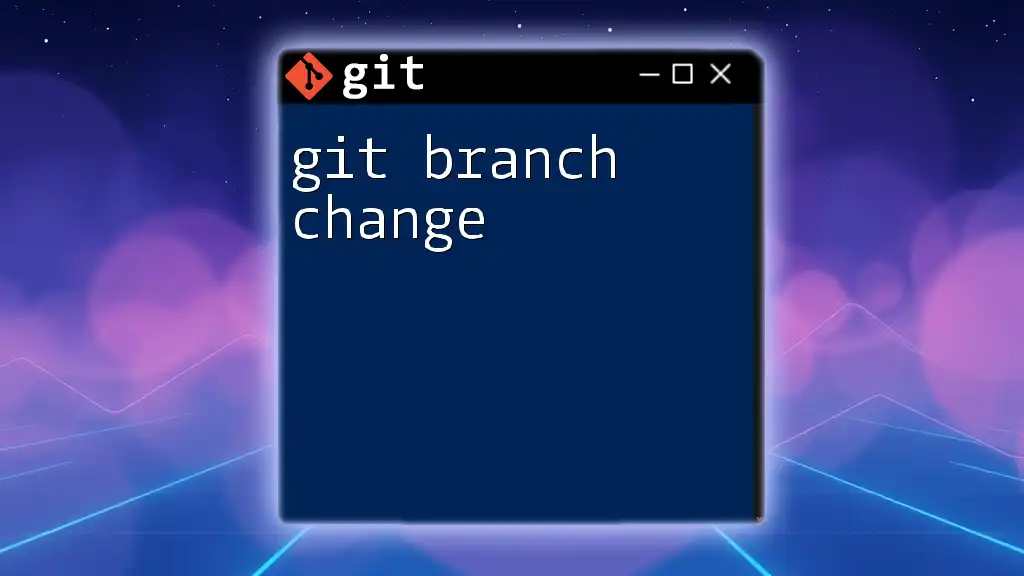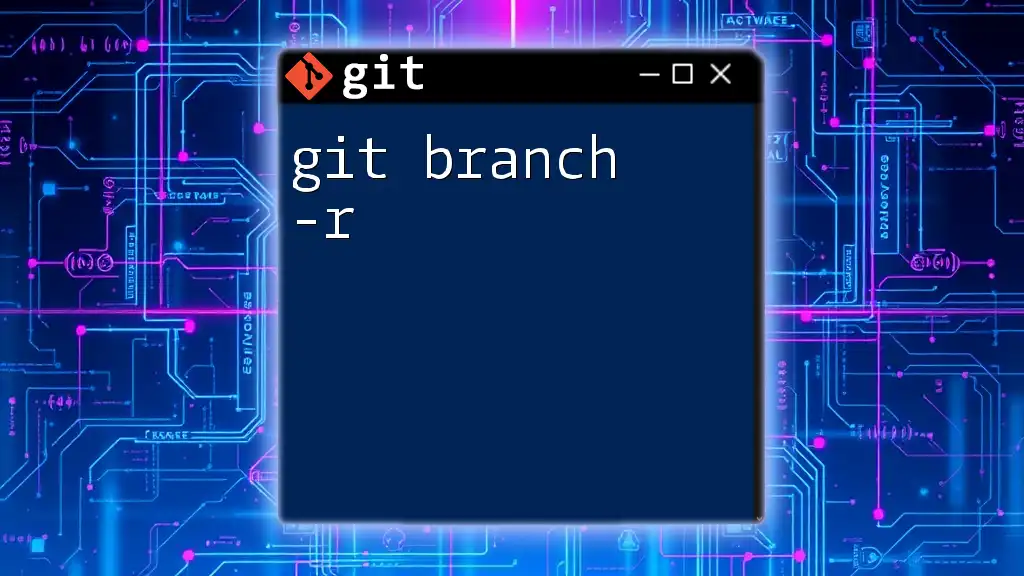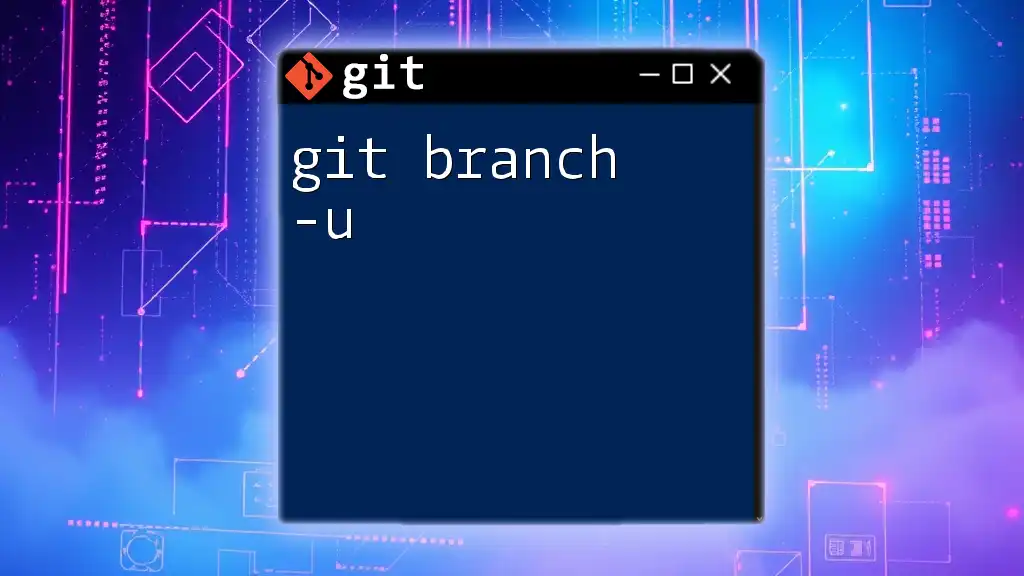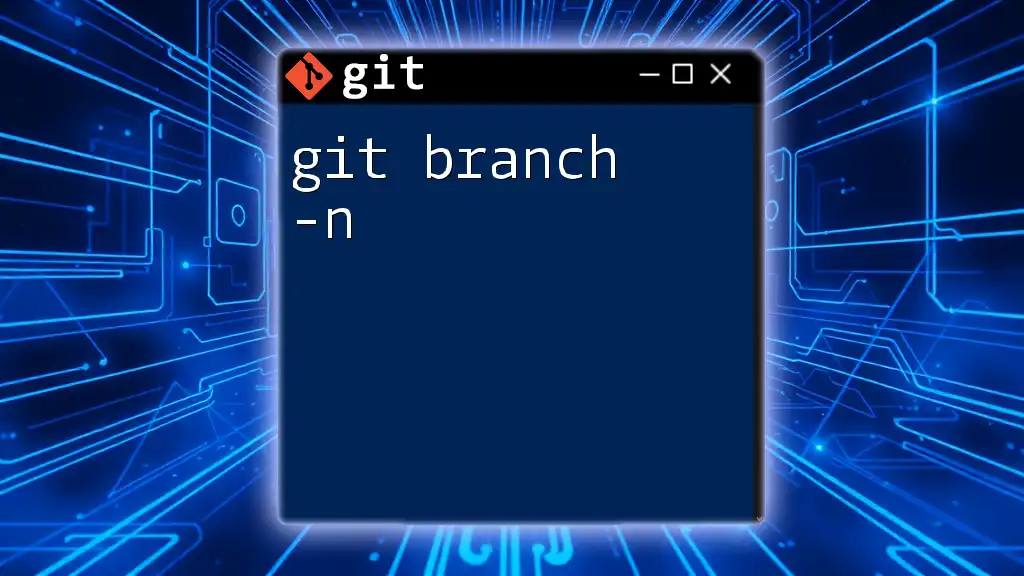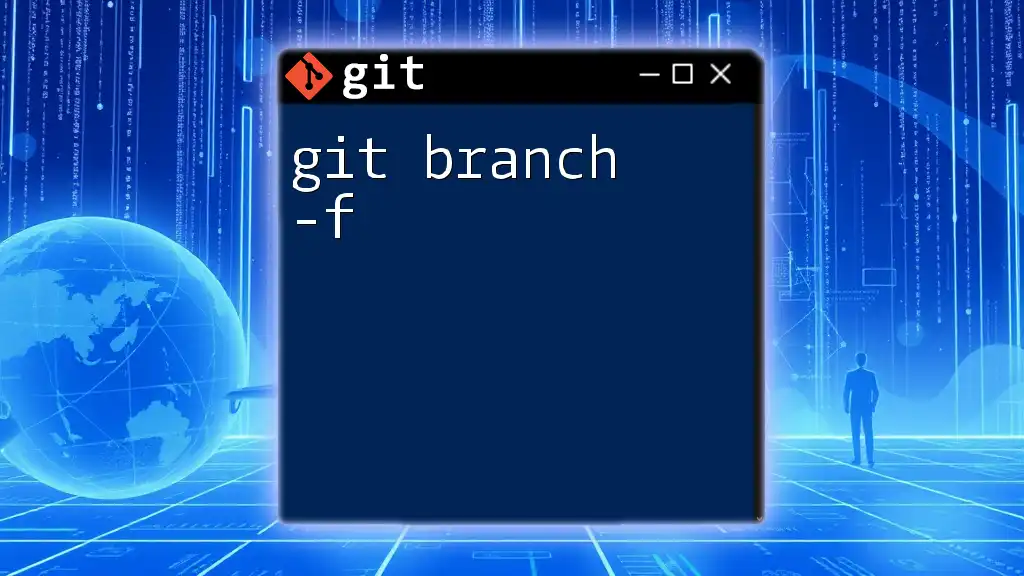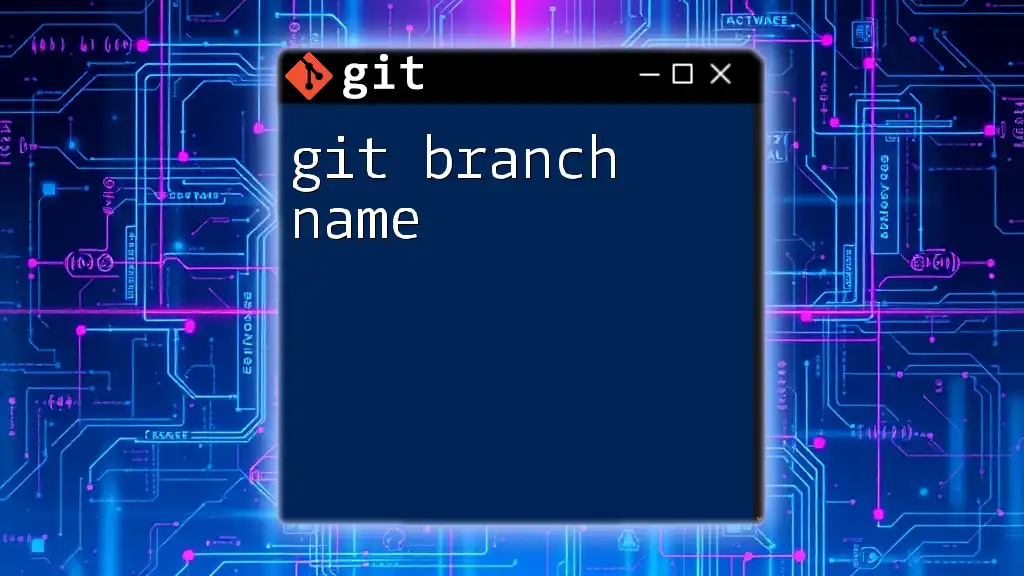The `git branch` command is used to create, list, and delete branches in a Git repository, while the `git branch <branch-name>` command specifically creates a new branch with the given name.
Here's a code snippet demonstrating how to create a new branch:
git branch new-feature
Understanding Git Branches: An Overview
What is Git?
Git is a version control system that allows developers to track changes in their code and collaborate with others seamlessly. It plays a vital role in modern software development by enabling multiple contributors to work on a project simultaneously without overwriting each other's work. This capability is particularly crucial in collaborative environments, where teams need to manage changes efficiently and maintain a clear history of their project's development.
What is a Branch in Git?
In Git, a branch is essentially a separate line of development that allows users to diverge from the main code base and work on features, bug fixes, or experiments in isolation. Each branch contains its commits, making it easy to manage the development lifecycle without affecting the main project.
Basic Terminology to Know:
- HEAD: A reference to the latest commit in the currently checked-out branch.
- Working Directory: The directory where your project files reside, reflecting the current state of the repository.
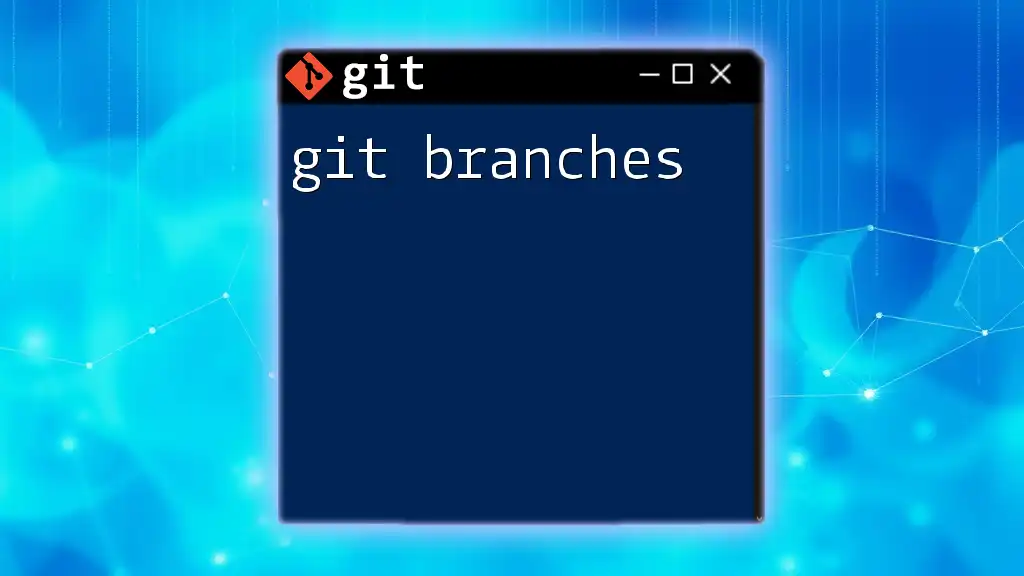
Git Branch vs. Other Git Concepts
Git Branch vs. Commit
Definition of a Commit
A commit in Git captures a snapshot of your files at a specific point in time. Think of it as a saved version of your project that allows you to revert back to it if necessary. Each commit includes metadata such as the author, date, and a message describing the changes made.
Comparison
Branches and commits are fundamentally interconnected. A branch serves as a pointer to the latest commit in that line of development, allowing users to create a separate path for changes. For instance, if you have a `main` branch and a `feature` branch, both can have different commits reflecting the ongoing work.
Example: If you make a commit on your `feature` branch, it won't affect the `main` branch until you decide to merge it back, thus facilitating parallel development:
git checkout feature # Switch to feature branch
git commit -m "Add new feature" # Commit changes
Git Branch vs. Checkout
What is Checkout?
The `checkout` command in Git is used to switch between different branches or commits. It enables users to navigate their project history and explore different code states quickly.
Comparison with Branch Command
While `git branch` is for managing branches (creating and deleting), `git checkout` is for switching the active branch. They serve complementary purposes, and understanding when to use each is crucial for an effective workflow.
Example: To create and switch to a new branch, you can combine the commands:
git checkout -b new-feature # Creates and switches to 'new-feature'
Git Branch vs. Merge
Understanding Merge
Merging is the process of integrating changes from one branch into another, typically from a feature branch back into the main branch. Git supports different types of merges, such as fast-forward and recursive.
Branching Implications
Branches facilitate merging by allowing developers to work independently and stable on different features. When a feature is complete, it can be merged back into the main project, keeping the codebase organized and conflict-free.
Example:
git checkout main # Switch to main branch
git merge feature # Merge feature branch into main
Git Branch vs. Remote Branch
What is a Remote Branch?
A remote branch represents a branch in a remote repository, allowing team members to share changes and collaborate effectively. Remote branches are critical for teams working in distributed environments.
Differences and Comparison
Local branches are stored on your machine, while remote branches exist in the online repository. You can track remote branches with the appropriate commands.
Example: To view remote branches:
git branch -r # List all remote branches
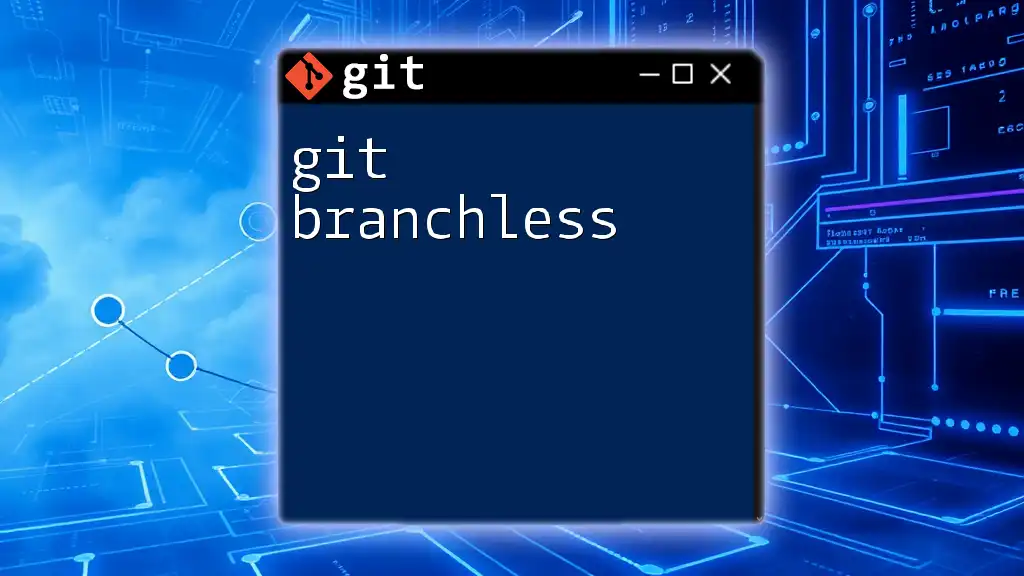
The Mechanics of Git Branching
Creating a Branch
Creating a branch in Git is straightforward. Use the `git branch` command to create a new branch without switching to it.
git branch new-feature # Creates a new branch called 'new-feature'
Switching Branches
To switch between branches, use the `git checkout` command. This allows you to test different features or make changes in isolation.
git checkout new-feature # Switches to the 'new-feature' branch
Deleting a Branch
Once a branch is no longer needed, you can remove it using the `-d` option. It’s essential to ensure that any necessary changes have been merged back to the main branch before deletion.
git branch -d old-feature # Deletes 'old-feature' branch
Listing Branches
You can view all branches in your repository and check which branch you are currently on with the `git branch` command.
git branch # Lists all local branches, current branch will be highlighted
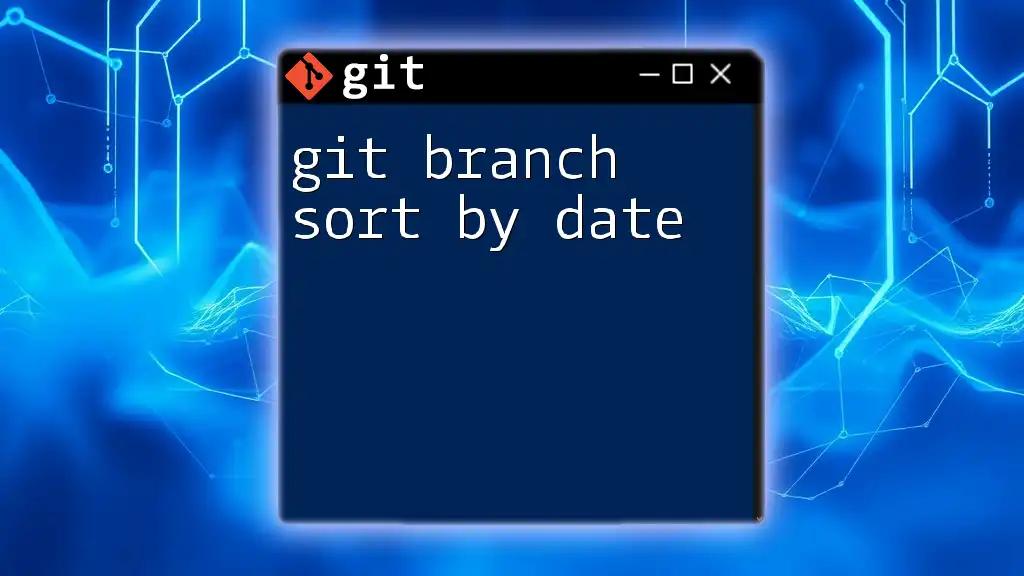
Advanced Branching Techniques
Creating a Branch from a Commit
Sometimes, you may want to create a branch based off a specific commit. This can be particularly useful for working on features that need to go back to an earlier state.
git branch new-branch <commit-hash> # Create a new branch from a specific commit
Renaming a Branch
Renaming a branch can help maintain clarity and organization within your project. You can rename your current branch using the `-m` option.
git branch -m old-branch new-branch # Renames 'old-branch' to 'new-branch'
Tracking Remote Branches
When working with remote repositories, setting up tracking branches allows you to easily sync changes between local and remote.
git branch --track new-feature origin/new-feature # Tracks remote branch

Best Practices for Branching in Git
Branch Naming Conventions
Using clear and descriptive names for branches enhances collaboration and project understandability. Avoid vague names and instead use patterns that reflect the task or feature being worked on.
Keeping Branches Updated
Regularly syncing your branches with upstream changes reduces conflicts and keeps your codebase fresh. Consider merging from the main branch into your feature branches often.
Feature Branch Workflow
The feature branch workflow involves creating a new branch for each new feature or task. This method offers several benefits, including simplified code reviews and easier integration of features.

Conclusion
In summary, understanding the distinctions between git branch and related concepts like commits, checkouts, merges, and remote branches is crucial for effective version control. Mastering branching strategies enhances collaboration, simplifies project management, and empowers developers to work more efficiently.
Final Thoughts
Practice using Git branching techniques to become more proficient at managing your code changes. Consider exploring additional courses or workshops offered to gain hands-on experience with Git commands and workflows.
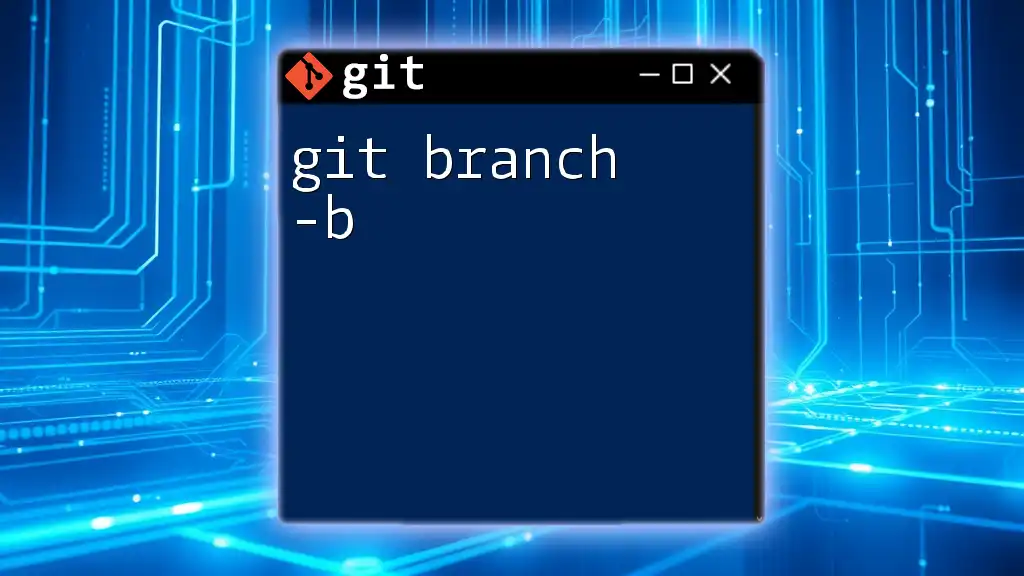
Call to Action
Stay tuned for upcoming training sessions or tutorials designed to deepen your understanding of Git commands and improve your productivity as a developer. For further reading, check out our resources on Git best practices and advanced techniques.

